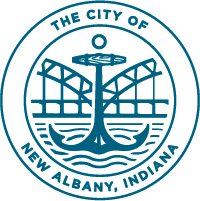Sewer Board & Mayor Urge Action to Protect Health, Environment, and Economic Growth of City
/At this evening's City Council meeting, the City Council will consider support of certain Sanitary Sewer Improvements that will finalize the City of New Albany’s obligation with the Environmental Protection Agency by eliminating all remaining overflows and to take action to protect residents from excessive sewer rate increases.
The New Albany Sewer Board is requesting that the New Albany City Council approve four capital projects and assign a Consumer Price Index for all future rate changes.
The four infrastructure projects include the construction of an underground storage tank, which is being designed to eliminate the remaining sanitary sewer overflows (SSOs) and meet all the final requirements demanded by the EPA under the Consent Decree including the oversight of sewer credits. The New Albany Sewer Board is requesting approval of the City Council to fund a system of underground, odorless storage tanks. These storage tanks will help eliminate the remaining SSOs by containing the contaminated rainwater within the tanks while the sanitary system is at peak capacity due to heavy rainfalls and not producing overflows into the community. As the rainfall and water levels subside, the contaminated water in the storage tanks will then be pumped back into the system. In addition, the Sewer Board is asking the City Council to help fund 2 lift station improvement projects and a clarifier system that helps improve the efficiency of the treatment operation. With these projects, it is expected that no additional major capital improvement projects will be needed for at least 10-15 years and the EPA will release the City of New Albany from the highly regulated consent decree which restricts development by regulating sanitary usage to prevent sanitary sewage overflows SSO’s.
The City of New Albany has been held to an EPA consent decree since 1992.
A Sanitary Sewer Overflow is when untreated sewage is discharged from the sanitary sewer system before it reaches the sewage treatment facility. These SSO’s are mainly caused by rainfall, creating what is known as a wet weather overflow. The EPA demanded the City of New Albany eliminate these SSOs in 1992. Before previous and recent improvements were made, a 1 inch rainfall could cause Sanitary Sewer Overflows in the millions of gallons. Now, with ongoing efforts and improvements like the Sewer Reline Project, even a heavy 3.5 inch rainfall event only produces about 10,000 gallons of SSOs. In 2010, the City identified nearly 80 SSO sites. Currently, the City is down to 16 sites that experience SSOs during certain conditions and rainfalls.
Also as part of the Consent Decree, the EPA has oversight and final approval of any developments within New Albany’s service through the granting of a limited amount of sewer credits. This means the EPA can limit, reduce, or deny economic development projects and growth opportunities for the City. The City of New Albany is experiencing growth, business development and future interest in redevelopment. However, with a limited amount of sewer credits remaining, and final approval of these developments by the EPA, the City could be in a situation of turning down projects and growth for the community.
The Sewer Board has also asked the City Council to assign the Consumer Price Index (CPI) for all future rate changes to protect residents and businesses from excessive rate increases.
On average, sewer expenses have risen 22% over the last 4 years in communities throughout the state of Indiana, and lots of these communities have not taken action yet to protect residents of their communities. Six years ago, residents of New Albany had to experience the harsh consequences of a large sewer rate increase because it was not addressed by prior officials before it became an issue. In 2010 and 2012, customers had to endure a total rate increase more than 40%. By comparison, the City of Jeffersonville had to implement a rate increase beginning in 2011 to 2015 which equated to approximately a 200% increase to customers in their average sewer bill from about $24 per month to $73 per month.
By taking this action, we can help protect residents of New Albany from exorbitant and detrimental rate increase to sewer customers as seen in other communities and help protect their financial situation in the future.
Sewer Utility Finances
Compared with other local communities, the New Albany Sewer Utility is on solid financial footing. The Utility is hopeful that all EPA requirements will be met within the next 3 years, provided the projects are approved that will eliminate the final nuisance SSOs. Current financials show that they Utility will see significant debt reduction of over $4 million annually within 7 years. As a comparison, some local communities are not projected to be debt-free until 2045.
"We’re very proud that we have been able to both reduce debt caused by EPA obligations and protect residents from large rate increases, while simultaneously making improvements to the Utility that help protect the environment. Adopted as presented, this ordinance will set the course for long-term economic growth, protect the health of all residents, and ensure the financial viability of the New Albany Sewer Utility well into the future," stated Mayor Gahan.









